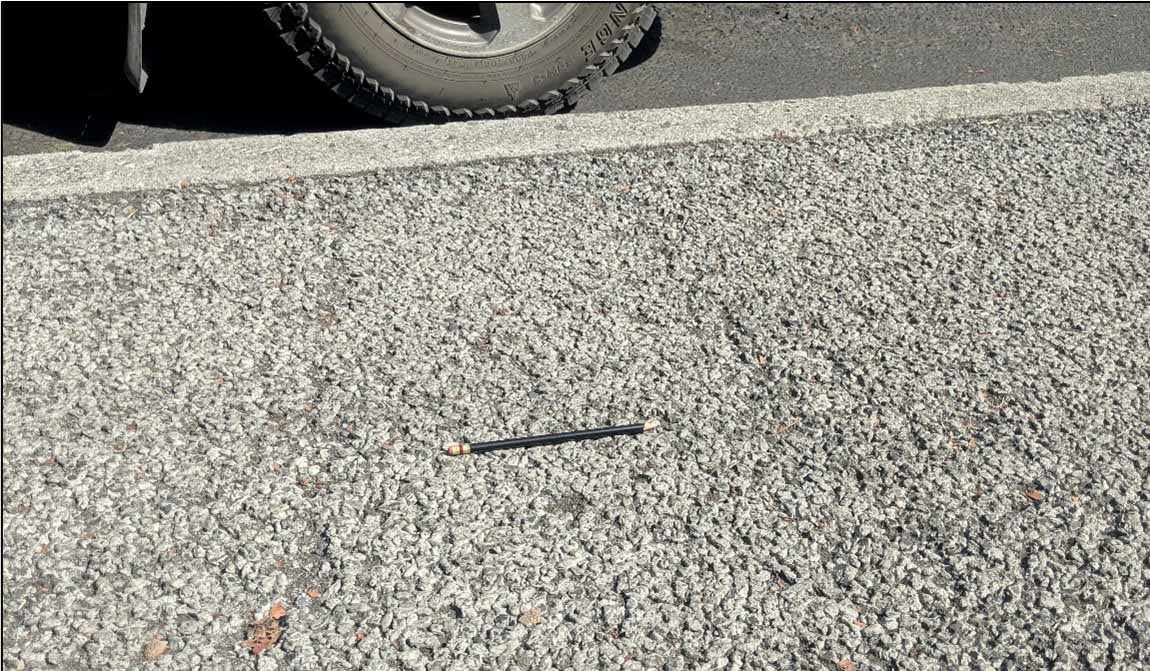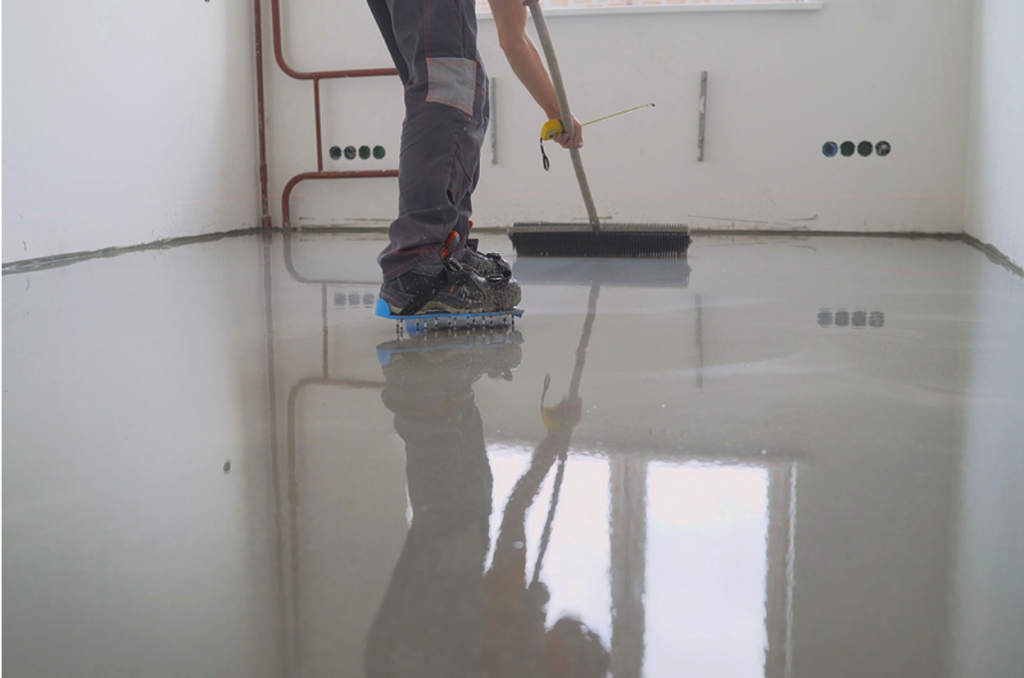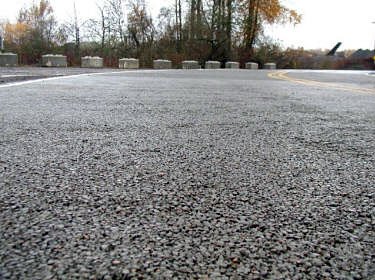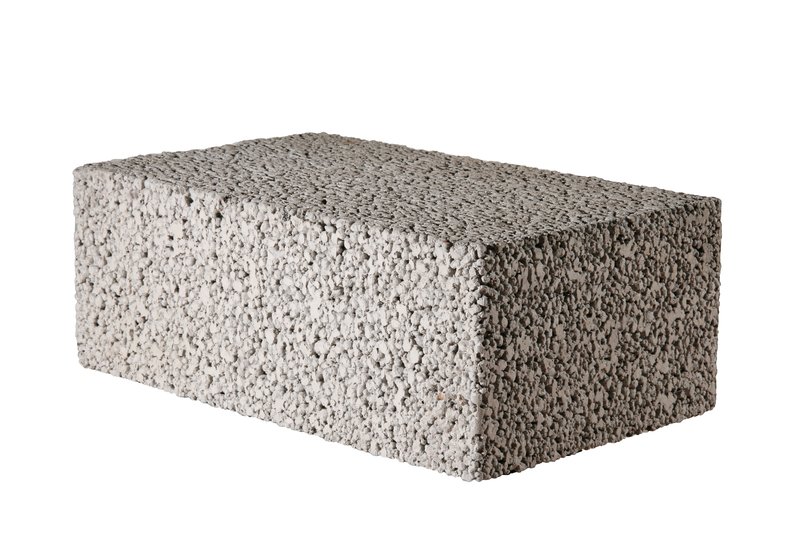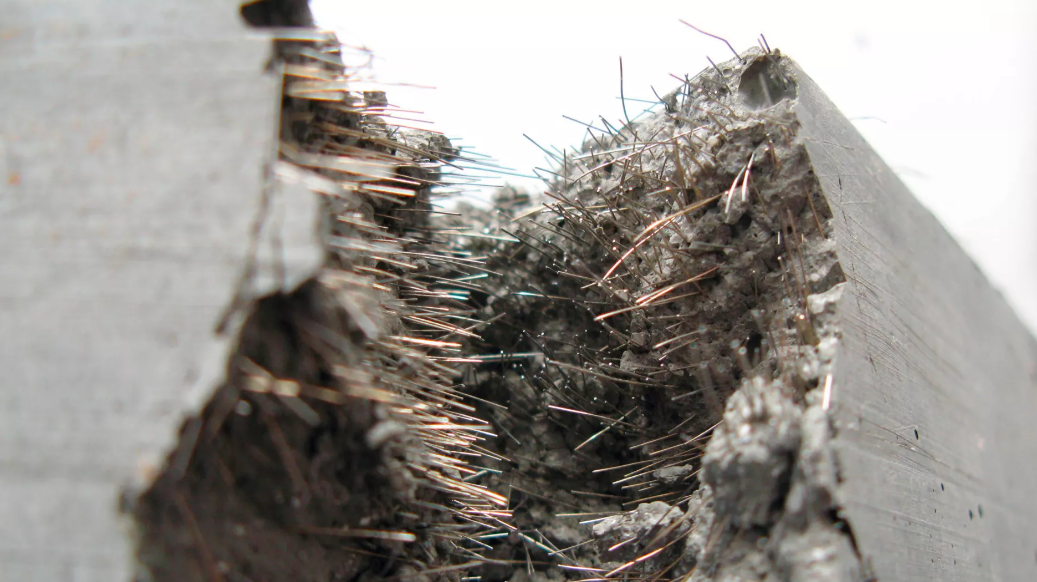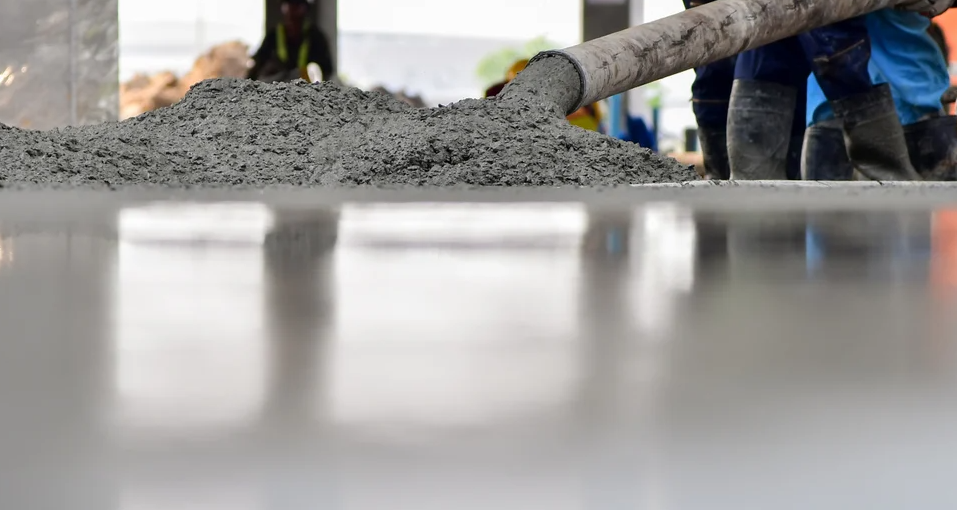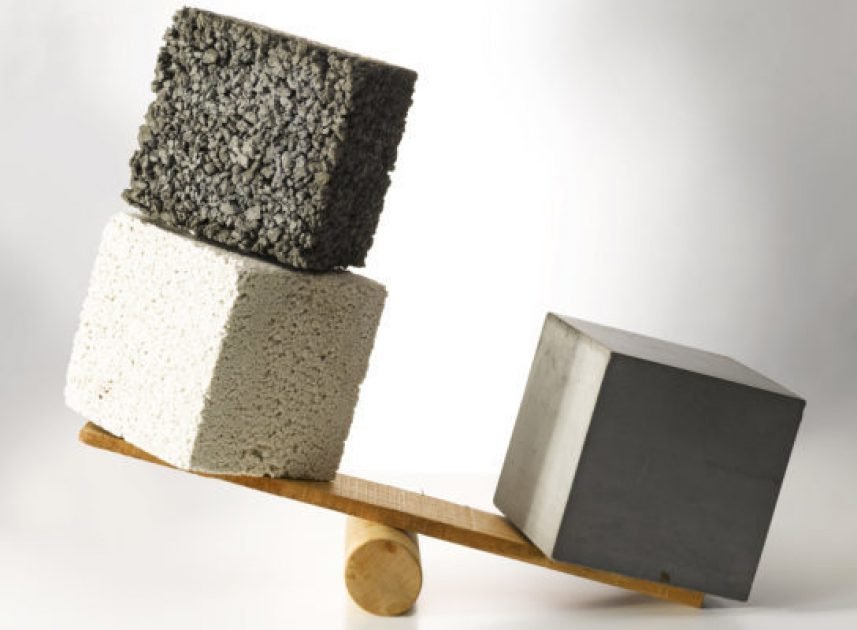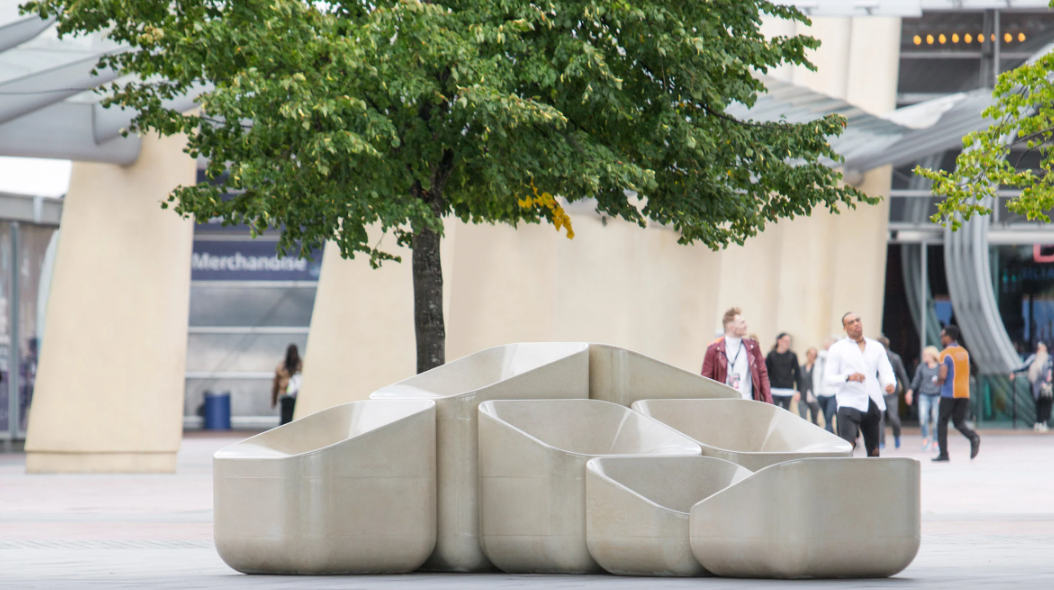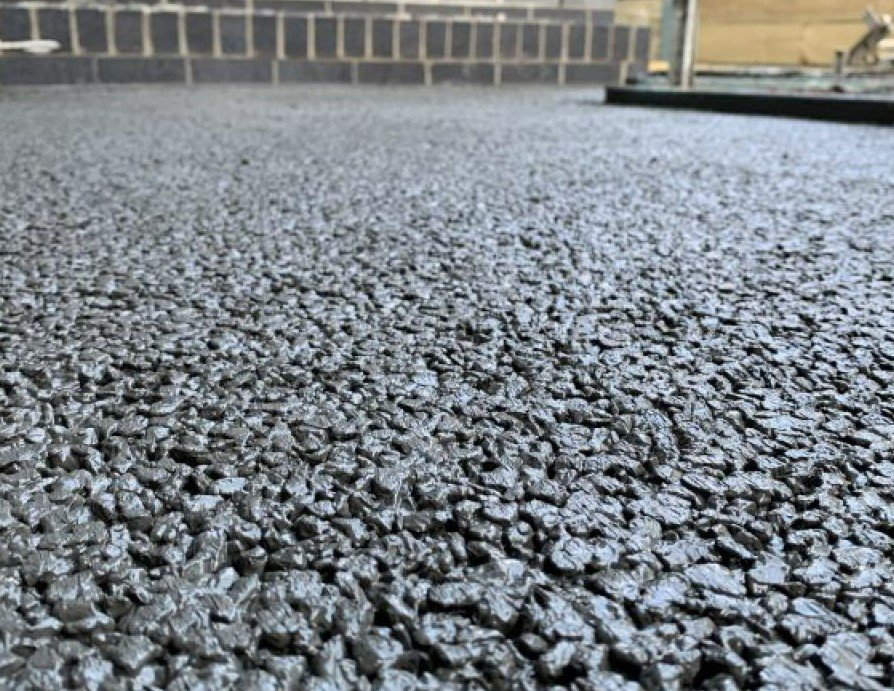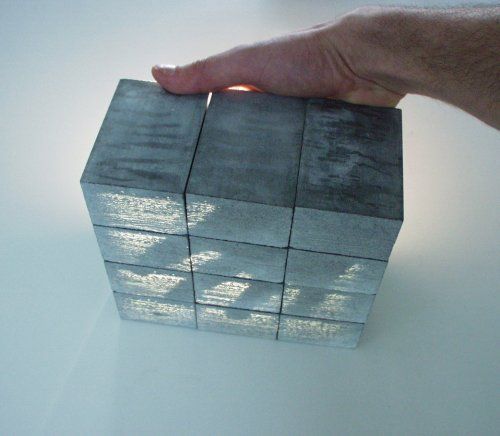Permeable Concrete Pavements: Promoting Sustainable Water Management in Urban Environments Permeable concrete pavements are an innovative solution that helps promote sustainable water management in urban environments by allowing rainwater to infiltrate into the soil. In this article, we will explore what permeable concrete pavements are, how they work, and what their benefits are for the environment and the community. Definition and Operation of Permeable Concrete Pavements Permeable concrete pavements, also known as porous pavements or permeable pavements, are designed with a porous structure that allows rainwater to filter through the surface and infiltrate into the underlying soil. This feature helps reduce surface runoff and the burden on stormwater drainage systems. Components and Design of Permeable Pavements Permeable concrete pavements are composed of an upper layer of porous concrete and a base layer of gravel or coarse aggregate. The porous concrete upper layer is designed with a controlled amount of voids or interconnected pores that allow water to pass through it and infiltrate into the soil. The design and specification of permeable pavements vary according to climatic conditions and specific site needs. Environmental Benefits of Permeable Pavements Among the environmental benefits of permeable concrete pavements are groundwater recharge, reduction of surface runoff and soil erosion, and improvement of water quality by filtering pollutants and sediments before they reach surface water bodies. Socioeconomic Benefits of Permeable Pavements In addition to environmental benefits, permeable concrete pavements also offer significant socioeconomic benefits. These may include cost reduction associated with the construction and maintenance of stormwater drainage systems, improved road safety by reducing the risk of flooding and landslides, and the creation of local jobs in the installation and maintenance of permeable pavements. Applications and Examples of Permeable Pavements Permeable concrete pavements are used in a variety of urban applications, including parking lots, residential streets, pedestrian walkways, and recreational areas. Examples of cities that have successfully implemented permeable pavements include Portland, Oregon, and Seattle, Washington, where permeable pavements have been installed in urban areas to improve water management and reduce pollution. Challenges and Design Considerations Despite their numerous benefits, permeable concrete pavements also present challenges and design considerations. These may include the need to maintain pavement permeability over time through regular cleaning of pores and sediment removal, as well as considering the load-bearing capacity and wear resistance of porous pavement in areas with heavy vehicular traffic. Conclusions and Future Perspectives In conclusion, permeable concrete pavements are an effective solution for promoting sustainable water management in urban environments by reducing surface runoff and improving water quality. With their ability to naturally infiltrate and treat rainwater, permeable pavements are playing an important role in creating more resilient and sustainable cities worldwide. Recents post concrete work sustainable Self-Leveling Concrete: Simplifying the Leveling Process in Construction #2 However, the quest for innovation in concrete infrastructure has taken center stage, bridging the gap between traditional methods and groundbreaking… Read More Self-Leveling Concrete: Simplifying the Leveling Process in Construction However, the quest for innovation in concrete infrastructure has taken center stage, bridging the gap between traditional methods and groundbreaking… Read More Porous Concrete: Reducing the Impact of Urban Flooding However, the quest for innovation in concrete infrastructure has taken center stage, bridging the gap between traditional methods and groundbreaking… Read More Carbonated Concrete: An Innovative Solution for Self-Repair of Concrete Structures However, the quest for innovation in concrete infrastructure has taken center stage, bridging the gap between traditional methods and groundbreaking… Read More Reinforced Concrete with Fibers: Enhancing Strength and Durability of Structures However, the quest for innovation in concrete infrastructure has taken center stage, bridging the gap between traditional methods and groundbreaking… Read More Self-Compacting Concrete: Innovation in Construction to Enhance Efficiency and Quality However, the quest for innovation in concrete infrastructure has taken center stage, bridging the gap between traditional methods and groundbreaking… Read More Load More End of Content.
Self-Leveling Concrete: Simplifying the Leveling Process in Construction
Self-Leveling Concrete: Simplifying the Leveling Process in Construction Self-leveling concrete is an innovation in the construction industry that simplifies the surface leveling process. In this article, we will explore what self-leveling concrete is, how it works, and its applications in various construction projects. Definition and Characteristics of Self-Leveling Concrete Self-leveling concrete is a type of concrete mixture designed to spread and level itself without the need for external vibration or additional manipulation. It contains special additives that improve its flowability and self-leveling ability, making it ideal for applications where a flat and uniform surface is required. Application Process The application process of self-leveling concrete is relatively simple. After preparing the base surface, the self-leveling concrete is poured onto the surface and spread evenly with the help of smoothing tools. The material will automatically level itself to form a smooth and flat surface in a short amount of time. Applications in Construction Self-leveling concrete is used in a variety of construction applications, including industrial floors, commercial and residential floors, pavements, stairs, and access ramps. It is also used in renovation projects where a leveled surface is required over an existing base. Advantages of Self-Leveling Concrete The advantages of self-leveling concrete include its ability to save time and labor on the job site, its ability to produce leveled surfaces with high precision, and its versatility to adapt to a variety of application conditions. Design and Preparation Considerations When designing and installing self-leveling concrete, it is important to consider factors such as the quality of the base surface, ambient temperature, and relative humidity. Manufacturer specifications and recommendations should be followed to ensure optimal material performance. Challenges and Limitations Although self-leveling concrete offers numerous advantages in terms of efficiency and finish quality, it also presents some challenges and limitations. These may include higher costs compared to conventional concrete, shorter setting times, and the need for specialized equipment for installation. Conclusions and Future Perspectives: In summary, self-leveling concrete is a valuable tool for simplifying the leveling process in construction and improving finish quality in a variety of applications. With its ability to produce leveled surfaces quickly and efficiently, self-leveling concrete is gaining popularity in the construction industry and promises to remain an innovative solution in the future. Recents post concrete work sustainable Porous Concrete: Reducing the Impact of Urban Flooding #3 However, the quest for innovation in concrete infrastructure has taken center stage, bridging the gap between traditional methods and groundbreaking… Read More Self-Leveling Concrete: Simplifying the Leveling Process in Construction However, the quest for innovation in concrete infrastructure has taken center stage, bridging the gap between traditional methods and groundbreaking… Read More Porous Concrete: Reducing the Impact of Urban Flooding However, the quest for innovation in concrete infrastructure has taken center stage, bridging the gap between traditional methods and groundbreaking… Read More Carbonated Concrete: An Innovative Solution for Self-Repair of Concrete Structures However, the quest for innovation in concrete infrastructure has taken center stage, bridging the gap between traditional methods and groundbreaking… Read More Reinforced Concrete with Fibers: Enhancing Strength and Durability of Structures However, the quest for innovation in concrete infrastructure has taken center stage, bridging the gap between traditional methods and groundbreaking… Read More Self-Compacting Concrete: Innovation in Construction to Enhance Efficiency and Quality However, the quest for innovation in concrete infrastructure has taken center stage, bridging the gap between traditional methods and groundbreaking… Read More Load More End of Content.
Porous Concrete: Reducing the Impact of Urban Flooding
Porous Concrete: Reducing the Impact of Urban Flooding Porous concrete is an innovative solution used to mitigate the impact of urban flooding by allowing water to filter through its surface. In this article, we will explore what porous concrete is, how it works, and how it can help reduce flooding issues in urban environments. Definition and Characteristics of Porous Concrete Porous concrete, also known as permeable pavement, is a type of concrete that contains a significant amount of interconnected voids or pores. These pores allow water to flow through the pavement instead of pooling on the surface, thus reducing the risk of flooding and improving water management in urban environments. Operation of Porous Concrete When it rains, water falling on porous pavement infiltrates through the pores and either percolates into the underlying soil or is collected in underground drainage systems. This prevents water accumulation on the surface, reduces surface runoff, and decreases the burden on stormwater sewer systems, thereby helping to prevent floods and mitigate soil erosion. Applications of Porous Concrete Porous concrete is used in a variety of urban applications, including sidewalks, pedestrian pathways, parking lots, plazas, and recreational areas. It is also used in green infrastructure projects such as rain gardens and stormwater catchment areas, where it is employed to naturally infiltrate and treat rainwater. Benefits of Porous Concrete The benefits of porous concrete include reducing the risk of urban flooding, improving water quality, recharging groundwater aquifers, reducing the urban heat island effect, and promoting biodiversity by providing habitats for local flora and fauna. Design and Maintenance Considerations When designing and installing porous pavement, it is important to consider factors such as the type of underlying soil, terrain slope, traffic volume, and local climatic conditions. Additionally, proper maintenance practices, such as regular cleaning of pores and crack repair, should be followed to ensure optimal performance of porous pavement over time. Challenges and Limitations While porous concrete offers numerous benefits in terms of water management and flood mitigation, it also presents some challenges and limitations. These may include the need for proper installation and maintenance, as well as safety and durability considerations in areas with heavy traffic or extreme weather conditions. Conclusions and Future Perspectives In conclusion, porous concrete is an effective tool for reducing the impact of urban flooding and improving water management in urban environments. With its ability to naturally infiltrate and treat rainwater, porous concrete is playing an important role in creating more resilient and sustainable cities worldwide. Recents post concrete work sustainable Carbonated Concrete: An Innovative Solution for Self-Repair of Concrete Structures #2 However, the quest for innovation in concrete infrastructure has taken center stage, bridging the gap between traditional methods and groundbreaking… Read More Carbonated Concrete: An Innovative Solution for Self-Repair of Concrete Structures However, the quest for innovation in concrete infrastructure has taken center stage, bridging the gap between traditional methods and groundbreaking… Read More Reinforced Concrete with Fibers: Enhancing Strength and Durability of Structures However, the quest for innovation in concrete infrastructure has taken center stage, bridging the gap between traditional methods and groundbreaking… Read More Self-Compacting Concrete: Innovation in Construction to Enhance Efficiency and Quality However, the quest for innovation in concrete infrastructure has taken center stage, bridging the gap between traditional methods and groundbreaking… Read More Lightweight Concrete: Innovative Solutions for Efficient Construction However, the quest for innovation in concrete infrastructure has taken center stage, bridging the gap between traditional methods and groundbreaking… Read More Urban Furniture Design in Concrete: A Modern and Durable Approach However, the quest for innovation in concrete infrastructure has taken center stage, bridging the gap between traditional methods and groundbreaking… Read More Load More End of Content.
Carbonated Concrete: An Innovative Solution for Self-Repair of Concrete Structures
Carbonated Concrete: An Innovative Solution for Self-Repair of Concrete Structures Carbonated concrete is an emerging technology in the construction industry that offers an innovative solution for the self-repair of concrete structures. In this article, we will explore what carbonated concrete is, how it works, and its applications in the repair and maintenance of infrastructure. Definition and Operating Principle Carbonated concrete is a special type of concrete that incorporates carbon dioxide (CO2) during its curing process. This CO2 reacts with the components of concrete to form calcium carbonate, a compound that can fill cracks and fissures in the structure, thus providing a self-repair process. Self-Repair Mechanism When carbonated concrete is exposed to air, the carbon dioxide present in the atmosphere penetrates the concrete matrix and reacts with calcium hydroxide to form calcium carbonate. This carbonation process creates a solid material that fills existing cracks and fissures, thereby restoring the structural integrity of the concrete. Applications in Structure Repair Carbonated concrete is mainly used in the repair and maintenance of concrete structures such as bridges, buildings, pavements, and marine structures. It can be applied as a surface coating or injected directly into cracks and fissures, providing an effective and durable solution for structure restoration. Advantages of Carbonated Concrete The main advantages of carbonated concrete include its ability to self-repair without the need for human intervention, its low cost compared to other repair methods, and its long-term durability. Additionally, the carbonation process helps protect the reinforcement steel against corrosion, thus extending the structure’s lifespan. Design and Application Considerations When designing and applying carbonated concrete, it is important to consider factors such as the thickness of the coating, the porosity of the existing concrete, and local environmental conditions. Manufacturer specifications and recommendations should be followed to ensure effective and long-lasting application of the material. Continuous Research and Development Research and development in the field of carbonated concrete continue to advance, aiming to improve its properties and performance in a variety of structural applications. New mix formulations, enhanced additives, and innovative application techniques are being explored to optimize the self-repair process and increase the material’s durability. Conclusions and Future Perspectives: In summary, carbonated concrete offers a promising solution for the self-repair of concrete structures, providing a cost-effective and durable alternative to traditional repair methods. With its ability to autonomously restore the structural integrity of infrastructure, carbonated concrete is helping to enhance the safety and sustainability of constructions worldwide. Recents post concrete work sustainable Reinforced Concrete with Fibers: Enhancing Strength and Durability of Structures #2 However, the quest for innovation in concrete infrastructure has taken center stage, bridging the gap between traditional methods and groundbreaking… Read More Reinforced Concrete with Fibers: Enhancing Strength and Durability of Structures However, the quest for innovation in concrete infrastructure has taken center stage, bridging the gap between traditional methods and groundbreaking… Read More Self-Compacting Concrete: Innovation in Construction to Enhance Efficiency and Quality However, the quest for innovation in concrete infrastructure has taken center stage, bridging the gap between traditional methods and groundbreaking… Read More Lightweight Concrete: Innovative Solutions for Efficient Construction However, the quest for innovation in concrete infrastructure has taken center stage, bridging the gap between traditional methods and groundbreaking… Read More Urban Furniture Design in Concrete: A Modern and Durable Approach However, the quest for innovation in concrete infrastructure has taken center stage, bridging the gap between traditional methods and groundbreaking… Read More Permeable Concrete: An Ecological Solution for Water Management in Construction However, the quest for innovation in concrete infrastructure has taken center stage, bridging the gap between traditional methods and groundbreaking… Read More Load More End of Content.
Reinforced Concrete with Fibers: Enhancing Strength and Durability of Structures
Reinforced Concrete with Fibers: Enhancing Strength and Durability of Structures Reinforced concrete with fibers (RCF) is an advanced construction technique that has gained popularity due to its ability to enhance the strength and durability of structures. In this article, we will explore what reinforced concrete with fibers is, how it works, and what its benefits are compared to conventional concrete. Definition and Types of Fibers Used Reinforced concrete with fibers is a blend of conventional concrete that incorporates synthetic, metallic, or glass fibers to enhance its mechanical properties. Fibers can be of different types, such as steel fibers, polypropylene fibers, glass fibers, and carbon fibers, each with unique reinforcement characteristics. Operation and Benefits of RCF Fibers in reinforced concrete act as additional reinforcements that increase the toughness and tensile strength of the material. This helps prevent crack propagation, improve flexural strength, and reduce the risk of structural failure in the event of seismic loads or sudden impacts. Additionally, RCF can enhance fire resistance and abrasion resistance, making it ideal for a variety of structural and paving applications. Applications of Reinforced Concrete with Fibers RCF is used in a wide range of construction applications, including pavement slabs, industrial floors, precast elements, tunnel linings, and structural reinforcements. Its ability to provide uniformly distributed reinforcement throughout the material makes it especially useful in projects where high strength and durability are required. Types of Fibers and Their Properties The different fibers used in RCF have specific properties that affect their performance in concrete. For example, steel fibers are known for their high strength and crack control capability, while polypropylene fibers are lighter and corrosion-resistant. The choice of fiber type depends on the project’s needs and exposure conditions. Dosage and Mixing Process The dosage and mixing process of RCF are crucial to ensure optimal material performance. Factors such as the quantity and type of fibers, water-cement ratio, and uniform distribution of fibers in the mix must be considered to ensure consistent strength and durability throughout the structure. Design and Construction Considerations When designing and constructing with RCF, it is important to consider the specific properties of the material, as well as applicable building regulations and standards. Proper design and construction practices must be followed to ensure structural integrity and long-term durability of the work. Conclusions and Future Perspectives: In conclusion, reinforced concrete with fibers is an advanced technology that offers a range of benefits in terms of strength, durability, and structural performance. With its ability to improve the safety and longevity of structures, RCF is playing an increasingly important role in the construction of resilient and sustainable infrastructure worldwide. Recents post concrete work sustainable Self-Compacting Concrete: Innovation in Construction to Enhance Efficiency and Quality #2 However, the quest for innovation in concrete infrastructure has taken center stage, bridging the gap between traditional methods and groundbreaking… Read More Self-Compacting Concrete: Innovation in Construction to Enhance Efficiency and Quality However, the quest for innovation in concrete infrastructure has taken center stage, bridging the gap between traditional methods and groundbreaking… Read More Lightweight Concrete: Innovative Solutions for Efficient Construction However, the quest for innovation in concrete infrastructure has taken center stage, bridging the gap between traditional methods and groundbreaking… Read More Urban Furniture Design in Concrete: A Modern and Durable Approach However, the quest for innovation in concrete infrastructure has taken center stage, bridging the gap between traditional methods and groundbreaking… Read More Permeable Concrete: An Ecological Solution for Water Management in Construction However, the quest for innovation in concrete infrastructure has taken center stage, bridging the gap between traditional methods and groundbreaking… Read More Innovations in the Use of Transparent Concrete: Exploring Possibilities in Modern Architecture However, the quest for innovation in concrete infrastructure has taken center stage, bridging the gap between traditional methods and groundbreaking… Read More Load More End of Content.
Self-Compacting Concrete: Innovation in Construction to Enhance Efficiency and Quality
Self-Compacting Concrete: Innovation in Construction to Enhance Efficiency and Quality Self-compacting concrete (SCC) is a revolutionary innovation in the construction industry that offers numerous benefits in terms of efficiency, quality, and durability. In this article, we will explore what self-compacting concrete is, how it is produced, and its applications in construction projects. Definition and Characteristics of Self-Compacting Concrete Self-compacting concrete is a highly fluid and cohesive concrete mix that can be easily poured into molds and self-compacts under its own weight, without the need for external vibration. This characteristic makes it ideal for a variety of construction applications where a smooth and homogeneous finish is required. Production Process of SCC Self-compacting concrete is produced using a specific combination of materials, including Portland cement, fine and coarse aggregates, superplasticizers, and other special additives to enhance fluidity and cohesion. These materials are mixed in precise proportions to ensure optimal performance of the SCC. Applications in Construction Self-compacting concrete is used in a wide range of construction applications, including floor slabs, structural walls, columns, beams, and prefabricated elements. Its ability to easily fill complex molds and reach hard-to-access areas makes it especially useful in architecturally demanding projects. Benefits of Self-Compacting Concrete Among the numerous benefits of SCC are increased productivity and efficiency on the job site, superior quality of the surface finish, significant reduction in labor costs, and greater long-term durability and strength. Additionally, its ability to eliminate the need for vibration reduces noise and vibrations on the job site, thus improving working conditions for operators. Improvement of Safety and Occupational Health The use of self-compacting concrete can contribute to improving safety and occupational health on the job site by reducing workers’ exposure to vibrations associated with manual concrete compaction. This can help prevent musculoskeletal injuries and improve workers’ morale and productivity. Advances in Research and Development Ongoing research in the field of self-compacting concrete is leading to new advances and developments in terms of mix formulations, enhanced additives, and more efficient production techniques. These advances are further expanding the applications and benefits of SCC in the construction industry. Conclusions and Future Perspectives: In summary, self-compacting concrete represents a significant innovation in the construction industry, offering a unique combination of efficiency, quality, and durability. With its ability to improve productivity, safety, and the quality of finish in construction projects, SCC is transforming the way structures are built and designed worldwide. Recents post concrete work sustainable Lightweight Concrete: Innovative Solutions for Efficient Construction #2 However, the quest for innovation in concrete infrastructure has taken center stage, bridging the gap between traditional methods and groundbreaking… Read More Lightweight Concrete: Innovative Solutions for Efficient Construction However, the quest for innovation in concrete infrastructure has taken center stage, bridging the gap between traditional methods and groundbreaking… Read More Urban Furniture Design in Concrete: A Modern and Durable Approach However, the quest for innovation in concrete infrastructure has taken center stage, bridging the gap between traditional methods and groundbreaking… Read More Permeable Concrete: An Ecological Solution for Water Management in Construction However, the quest for innovation in concrete infrastructure has taken center stage, bridging the gap between traditional methods and groundbreaking… Read More Innovations in the Use of Transparent Concrete: Exploring Possibilities in Modern Architecture However, the quest for innovation in concrete infrastructure has taken center stage, bridging the gap between traditional methods and groundbreaking… Read More Designing Concrete Vertical Gardens: Merging Nature with Urban Architecture However, the quest for innovation in concrete infrastructure has taken center stage, bridging the gap between traditional methods and groundbreaking… Read More Load More End of Content.
Lightweight Concrete: Innovative Solutions for Efficient Construction
Lightweight Concrete: Innovative Solutions for Efficient Construction Lightweight concrete is an innovative option in construction that offers a series of benefits in terms of efficiency, performance, and sustainability. In this article, we will explore what lightweight concrete is, how it is produced, and its applications in the construction industry. What is Lightweight Concrete? Lightweight concrete is a variant of conventional concrete that incorporates lightweight aggregates, such as expanded clay, slag, or perlite, instead of conventional aggregates like gravel and crushed stone. This combination significantly reduces the density of the concrete, making it lighter and easier to handle. Properties and Characteristics Although lightweight concrete is less dense than conventional concrete, it still maintains adequate strength for use in a variety of construction applications. In addition to being lighter, lightweight concrete can also offer better fire resistance, increased impact resistance, and improved thermal and acoustic insulation capabilities. Production Process Lightweight concrete is produced using special techniques that incorporate lightweight aggregates into the concrete mix. These aggregates may be pretreated to improve their adherence to the cement and ensure uniform distribution in the mix. Once mixed, the materials are poured into molds and cured according to industry standards. Applications in Construction Lightweight concrete is used in a variety of construction applications where reducing the total weight of the structure is required. Some common applications include floor slabs, wall panels, prefabricated elements, soil fills, and roofs. It is also used in rehabilitation projects where the existing structural load is limited. Efficiency and Performance Benefits One of the main advantages of lightweight concrete is its ability to reduce the total weight of a structure, which can lead to more efficient and cost-effective construction. Additionally, its reduced weight can simplify transportation and on-site installation, saving time and resources during the construction process. Sustainability and Emission Reduction The use of lightweight concrete can contribute to the sustainability of a project by reducing the amount of materials needed and the emissions associated with their transportation. Additionally, its thermal insulation capability can help improve the energy efficiency of buildings, thereby reducing their environmental impact over time. Innovations and Future Developments The lightweight concrete industry continues to evolve with new technologies and materials that enhance its properties and performance. Research is being conducted in areas such as nanotechnology, materials engineering, and additive manufacturing to develop even more advanced and sustainable lightweight concretes for the future. Conclusion: Lightweight concrete offers innovative and efficient solutions for a variety of construction applications, from residential buildings to commercial and industrial infrastructures. With its benefits in terms of efficiency, performance, and sustainability, lightweight concrete is helping to drive the construction industry towards a more sustainable and resilient future. Recents post concrete work sustainable Urban Furniture Design in Concrete: A Modern and Durable Approach #2 However, the quest for innovation in concrete infrastructure has taken center stage, bridging the gap between traditional methods and groundbreaking… Read More Urban Furniture Design in Concrete: A Modern and Durable Approach However, the quest for innovation in concrete infrastructure has taken center stage, bridging the gap between traditional methods and groundbreaking… Read More Permeable Concrete: An Ecological Solution for Water Management in Construction However, the quest for innovation in concrete infrastructure has taken center stage, bridging the gap between traditional methods and groundbreaking… Read More Innovations in the Use of Transparent Concrete: Exploring Possibilities in Modern Architecture However, the quest for innovation in concrete infrastructure has taken center stage, bridging the gap between traditional methods and groundbreaking… Read More Designing Concrete Vertical Gardens: Merging Nature with Urban Architecture However, the quest for innovation in concrete infrastructure has taken center stage, bridging the gap between traditional methods and groundbreaking… Read More Green Concrete Construction: Reducing the Environmental Impact of Your Projects However, the quest for innovation in concrete infrastructure has taken center stage, bridging the gap between traditional methods and groundbreaking… Read More Load More End of Content.
Urban Furniture Design in Concrete: A Modern and Durable Approach
Urban Furniture Design in Concrete: A Modern and Durable Approach Urban furniture plays a crucial role in shaping and enhancing the functionality of public spaces in urban environments. In this article, we will explore how concrete urban furniture design offers a modern and durable approach to improving the aesthetics and utility of urban areas. Concrete Versatility in Urban Design Concrete is a versatile material that lends itself to a wide range of applications in urban design. From benches and tables to planters and sculptures, concrete can be adapted to a variety of shapes and styles to meet the specific needs of each urban space. Durability and Resistance Concrete urban furniture is known for its durability and resistance to weather conditions and daily wear and tear. Unlike other materials such as wood or metal, concrete is less susceptible to corrosion, rot, and vandalism, making it an ideal choice for public spaces. Modern and Aesthetic Design Concrete offers a modern and contemporary look that blends well with urban aesthetics. Its minimalist appearance and ability to adapt to custom designs allow for the creation of furniture pieces that complement and enhance the urban environment. Integration of Functionality In addition to its aesthetic appeal, concrete urban furniture can be designed to offer optimal functionality in public spaces. Ergonomic benches, smooth-surfaced tables, and planters with drainage systems are just some of the available options to enhance the user experience. Sustainability and Eco-Friendly Concrete is a sustainable and environmentally friendly material, especially when used with recycled aggregates and more efficient production techniques. By choosing concrete urban furniture, cities can reduce their carbon footprint and promote more sustainable design practices. Adaptability and Customization One of the advantages of concrete in urban furniture design is its ability to adapt to different contexts and needs. From small squares to large urban parks, concrete can be customized to meet the specific requirements of each space and community. Maintenance and Care Although concrete is durable, it still requires regular maintenance to preserve its appearance and functionality. Periodic sealing and cleaning are essential to protect urban furniture from the effects of weather and intensive use, ensuring its longevity and good condition over time. Conclusion: Concrete urban furniture design offers a unique combination of durability, functionality, and modern aesthetics that make it an ideal choice for enhancing public spaces in urban environments. With its versatility, resistance, and sustainability, concrete urban furniture is helping shape more attractive, functional, and sustainable cities worldwide. Recents post concrete work sustainable Permeable Concrete: An Ecological Solution for Water Management in Construction #2 However, the quest for innovation in concrete infrastructure has taken center stage, bridging the gap between traditional methods and groundbreaking… Read More Permeable Concrete: An Ecological Solution for Water Management in Construction However, the quest for innovation in concrete infrastructure has taken center stage, bridging the gap between traditional methods and groundbreaking… Read More Innovations in the Use of Transparent Concrete: Exploring Possibilities in Modern Architecture However, the quest for innovation in concrete infrastructure has taken center stage, bridging the gap between traditional methods and groundbreaking… Read More Designing Concrete Vertical Gardens: Merging Nature with Urban Architecture However, the quest for innovation in concrete infrastructure has taken center stage, bridging the gap between traditional methods and groundbreaking… Read More Green Concrete Construction: Reducing the Environmental Impact of Your Projects However, the quest for innovation in concrete infrastructure has taken center stage, bridging the gap between traditional methods and groundbreaking… Read More How to Incorporate Concrete Elements into a Minimalist Design: Practical Tips However, the quest for innovation in concrete infrastructure has taken center stage, bridging the gap between traditional methods and groundbreaking… Read More Load More End of Content.
Permeable Concrete: An Ecological Solution for Water Management in Construction
Permeable Concrete: An Ecological Solution for Water Management in Construction Permeable concrete is an innovative and ecological solution for water management in construction. In this article, we will explore in detail what permeable concrete is, how it works, and what its benefits are for the environment and sustainability. What is Permeable Concrete? Permeable concrete is a type of porous pavement that allows water to pass through it instead of accumulating on the surface. It is composed of a mixture of cement, aggregates, and special additives that create pores in the structure, allowing water to filter through to the underlying soil. How Permeable Concrete Works When it rains, the water that falls on permeable concrete filters through the pores and is absorbed into the soil below. This helps recharge groundwater aquifers, reduces surface runoff, and prevents soil erosion, thus contributing to more sustainable water management. Environmental Benefits The use of permeable concrete offers several significant environmental benefits. It reduces the risk of flooding by allowing water to infiltrate the soil instead of pooling on the surface, and it helps improve water quality by filtering out pollutants and sediments before they reach water bodies. Urban Drainage Improvement Permeable concrete is especially useful in urban environments where soil sealing has increased surface runoff and the risk of flooding. By providing a permeable surface, it helps restore the natural balance of the water cycle and reduces the burden on urban drainage systems. Reduction of Urban Heat Island Effect Another benefit of permeable concrete is its ability to reduce the urban heat island effect by absorbing and retaining less heat than conventional pavement. This helps mitigate excessive heating in urban areas and creates cooler and more comfortable environments for residents. Applications in Landscaping and Urban Design Permeable concrete can be used in a variety of landscaping and urban design applications, including sidewalks, trails, plazas, parking lots, and patios. Its ability to combine functionality with sustainability makes it ideal for sustainable urban development projects. Maintenance Considerations While permeable concrete requires minimal maintenance compared to conventional pavement, it is important to conduct periodic inspections and cleanings to ensure its proper functioning. This may include debris removal and cleaning of pores to maintain pavement permeability. Conclusion: Permeable concrete offers an ecological and sustainable solution for water management in construction, helping to reduce the risk of flooding, improve water quality, and mitigate the urban heat island effect. With its numerous environmental benefits and versatility in urban design applications, permeable concrete is gaining popularity as a more sustainable alternative to conventional pavement. Recents post concrete work sustainable Innovations in the Use of Transparent Concrete: Exploring Possibilities in Modern Architecture #2 However, the quest for innovation in concrete infrastructure has taken center stage, bridging the gap between traditional methods and groundbreaking… Read More Innovations in the Use of Transparent Concrete: Exploring Possibilities in Modern Architecture However, the quest for innovation in concrete infrastructure has taken center stage, bridging the gap between traditional methods and groundbreaking… Read More Designing Concrete Vertical Gardens: Merging Nature with Urban Architecture However, the quest for innovation in concrete infrastructure has taken center stage, bridging the gap between traditional methods and groundbreaking… Read More Green Concrete Construction: Reducing the Environmental Impact of Your Projects However, the quest for innovation in concrete infrastructure has taken center stage, bridging the gap between traditional methods and groundbreaking… Read More How to Incorporate Concrete Elements into a Minimalist Design: Practical Tips However, the quest for innovation in concrete infrastructure has taken center stage, bridging the gap between traditional methods and groundbreaking… Read More Benefits of Self-Leveling Concrete: Facilitating Installation on Uneven Surfaces However, the quest for innovation in concrete infrastructure has taken center stage, bridging the gap between traditional methods and groundbreaking… Read More Load More End of Content.
Innovations in the Use of Transparent Concrete: Exploring Possibilities in Modern Architecture
Innovations in the Use of Transparent Concrete: Exploring Possibilities in Modern Architecture Transparent concrete is an exciting innovation in the field of architecture and construction, combining the strength and durability of concrete with the transparency of glass. In this article, we will explore the latest innovations in the use of transparent concrete and the possibilities it offers in modern architecture. Nanoparticle Technology One of the latest innovations in transparent concrete development involves the use of nanoparticles to enhance its translucency. These nanoparticles allow light to pass through the concrete, creating stunning visual effects and opening up new possibilities in architectural design. Interior Design Applications Transparent concrete offers a unique alternative for interior design, allowing for the creation of walls, floors, and structural elements that let natural light through. This can help improve lighting and create brighter, more welcoming interior spaces. Façade Design Transparent concrete facades offer a modern and contemporary aesthetic to buildings while providing protection against the elements and improved energy efficiency. The ability to allow natural light through can reduce the need for artificial lighting and enhance the building’s energy efficiency. Decorative Elements Transparent concrete can also be used to create unique decorative elements such as room dividers, furniture, and fixtures. Its combination of strength and transparency makes it ideal for adding a touch of style and modernity to any space. Sustainability and Energy Efficiency The use of transparent concrete in modern architecture can also contribute to the sustainability and energy efficiency of buildings. By allowing more natural light to pass through, the need for artificial lighting is reduced, which in turn can lower energy consumption and associated carbon emissions. Developments in Research and Development Research and development in the field of transparent concrete are constantly evolving, with new advancements and discoveries expanding the possibilities of its use in architecture and construction. Future developments are expected to further improve its performance and versatility. Integration with Emerging Technologies Transparent concrete is also increasingly being integrated with emerging technologies such as smart lighting systems and integrated solar panels. This integration can enhance the functionality and performance of buildings while providing innovative solutions to current construction challenges. Conclusion: Transparent concrete represents an exciting frontier in architecture and construction, offering a unique combination of strength, durability, and transparency. With continuous advancements in research and development, the use of transparent concrete in modern architecture is poised to grow and expand, offering new possibilities and creative opportunities for designers, architects, and builders. Recents post concrete work sustainable Designing Concrete Vertical Gardens: Merging Nature with Urban Architecture #2 However, the quest for innovation in concrete infrastructure has taken center stage, bridging the gap between traditional methods and groundbreaking… Read More Designing Concrete Vertical Gardens: Merging Nature with Urban Architecture However, the quest for innovation in concrete infrastructure has taken center stage, bridging the gap between traditional methods and groundbreaking… Read More Green Concrete Construction: Reducing the Environmental Impact of Your Projects However, the quest for innovation in concrete infrastructure has taken center stage, bridging the gap between traditional methods and groundbreaking… Read More How to Incorporate Concrete Elements into a Minimalist Design: Practical Tips However, the quest for innovation in concrete infrastructure has taken center stage, bridging the gap between traditional methods and groundbreaking… Read More Benefits of Self-Leveling Concrete: Facilitating Installation on Uneven Surfaces However, the quest for innovation in concrete infrastructure has taken center stage, bridging the gap between traditional methods and groundbreaking… Read More How to Choose the Right Type of Concrete for Your Project: A Complete Guide However, the quest for innovation in concrete infrastructure has taken center stage, bridging the gap between traditional methods and groundbreaking… Read More Load More End of Content.

